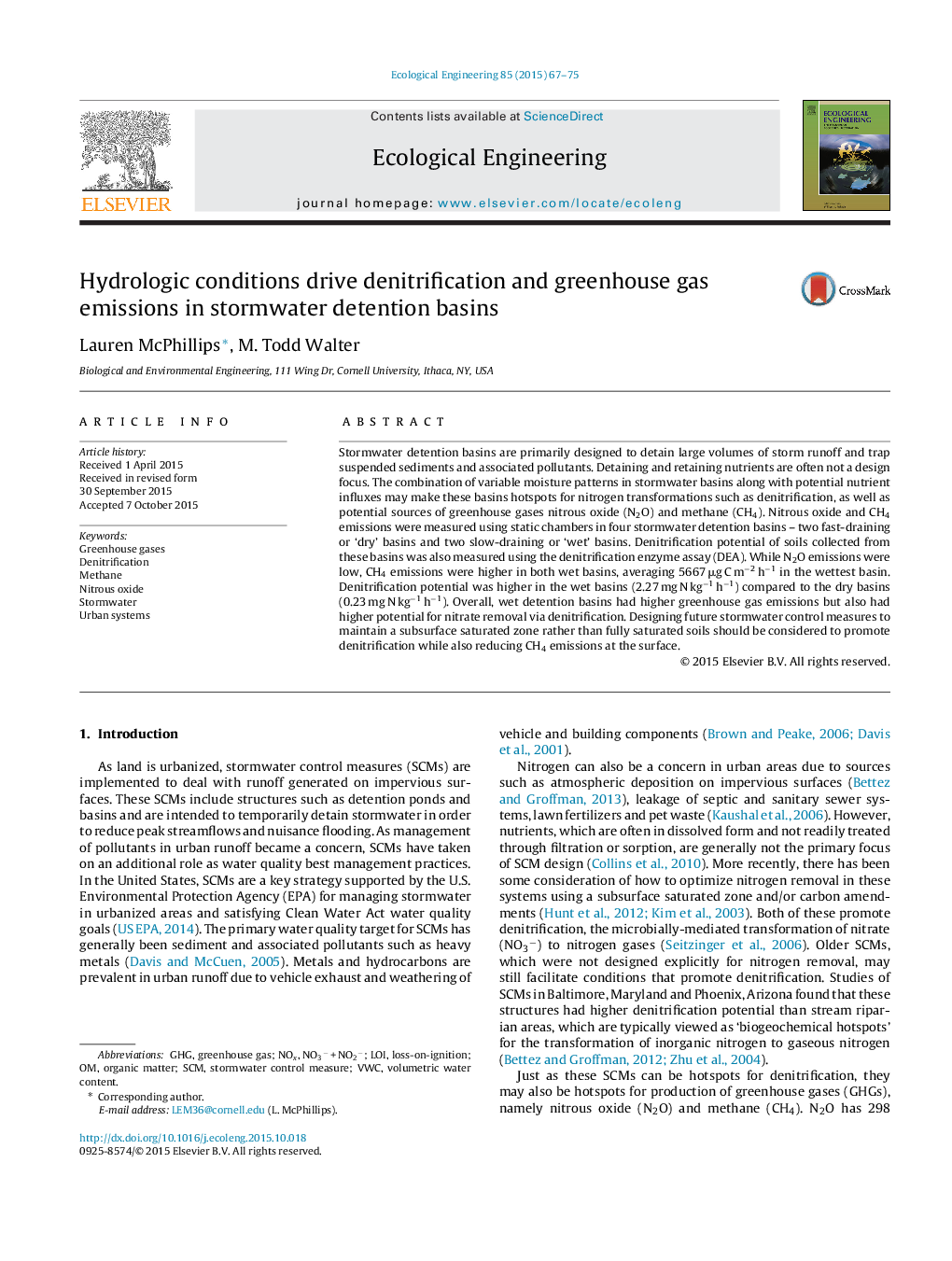| کد مقاله | کد نشریه | سال انتشار | مقاله انگلیسی | نسخه تمام متن |
|---|---|---|---|---|
| 6301587 | 1618014 | 2015 | 9 صفحه PDF | دانلود رایگان |
عنوان انگلیسی مقاله ISI
Hydrologic conditions drive denitrification and greenhouse gas emissions in stormwater detention basins
ترجمه فارسی عنوان
شرایط هیدرولوژیکی باعث تخریب و انتشار گازهای گلخانه ای در حوضچه های حبس طوفان می شود
دانلود مقاله + سفارش ترجمه
دانلود مقاله ISI انگلیسی
رایگان برای ایرانیان
کلمات کلیدی
GHGSCMVWCDenitrification - denitrificationNOx - NOXloss-on-ignition - از دست دادن بر روی اشتعالStormwater control measure - اندازه گیری کنترل طوفانNitrous oxide - اکسید نیتروژنvolumetric water content - حجم آب حجمیUrban systems - سیستم های شهریStormwater - طوفان آبLOI - قانونorganic matter - ماده آلیMethane - متان Greenhouse gas - گاز گلخانه ایGreenhouse gases - گازهای گلخانه ای
موضوعات مرتبط
علوم زیستی و بیوفناوری
علوم کشاورزی و بیولوژیک
بوم شناسی، تکامل، رفتار و سامانه شناسی
چکیده انگلیسی
Stormwater detention basins are primarily designed to detain large volumes of storm runoff and trap suspended sediments and associated pollutants. Detaining and retaining nutrients are often not a design focus. The combination of variable moisture patterns in stormwater basins along with potential nutrient influxes may make these basins hotspots for nitrogen transformations such as denitrification, as well as potential sources of greenhouse gases nitrous oxide (N2O) and methane (CH4). Nitrous oxide and CH4 emissions were measured using static chambers in four stormwater detention basins - two fast-draining or 'dry' basins and two slow-draining or 'wet' basins. Denitrification potential of soils collected from these basins was also measured using the denitrification enzyme assay (DEA). While N2O emissions were low, CH4 emissions were higher in both wet basins, averaging 5667 μg C mâ2 hâ1 in the wettest basin. Denitrification potential was higher in the wet basins (2.27 mg N kgâ1 hâ1) compared to the dry basins (0.23 mg N kgâ1 hâ1). Overall, wet detention basins had higher greenhouse gas emissions but also had higher potential for nitrate removal via denitrification. Designing future stormwater control measures to maintain a subsurface saturated zone rather than fully saturated soils should be considered to promote denitrification while also reducing CH4 emissions at the surface.
ناشر
Database: Elsevier - ScienceDirect (ساینس دایرکت)
Journal: Ecological Engineering - Volume 85, December 2015, Pages 67-75
Journal: Ecological Engineering - Volume 85, December 2015, Pages 67-75
نویسندگان
Lauren McPhillips, M. Todd Walter,
